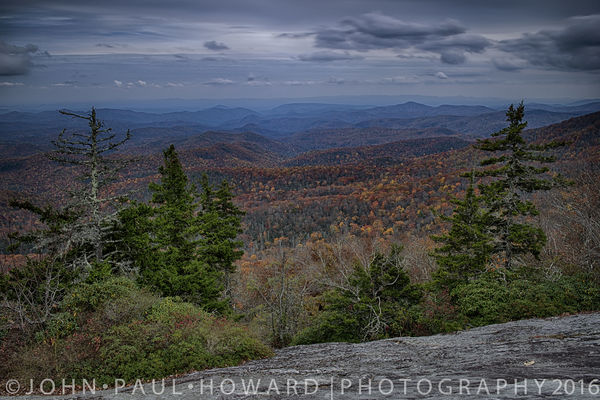NIK Processing Sequence
Nov 29, 2016 10:32:45 #
I just finished watching a 1-hour Youtube video on the Nik collection. I was surprised and somewhat confused by one recommendation regarding the sequence of edits. Presuming you do your first edits in LR, and then start to export to Nik in sequence: Raw process in LR, Define 2 for noise, Vivasa 2 for specific color work (alternatively HDR Effects 2), then Color Effects or Silver Effects, and finally, Output Sharpener. The recommendation is to Resize the image before the output sharpener. I can understand that the type of display (print or web) and the size of the image should impact the sharpening. That makes sense to me. But I tend to resize on export, using the export menu to define the size etc. If going to the web, I downsize and convert to jpg. If I do this and then sharpen, I end up with a Tiff again, and much larger size. I then need to re-export and downsize. Seems like a lot of work, a complicated process and probably, a pretty edgy image again. (See attached 2-shot HDR that went through this process. Interesting that this images looks a lot darker uploaded to UHH than on my screen.) Even if I resize within LR or PS, and then sharpen, I end up with a large Tiff again, which needs to be downsized to send to the web. What am I missing? Thanks,
Nov 29, 2016 10:41:24 #
Nov 29, 2016 11:08:11 #
bsprague wrote:
Would you post a link to the YouTube tutorial? Thanks.
This is the general page
https://video.search.yahoo.com/yhs/search?fr=yhs-iry-fullyhosted_011&hsimp=yhs-fullyhosted_011&hspart=iry&p=nik+software+lessons+on+youtube#action=close
This is the specific video I watched.
https://video.search.yahoo.com/yhs/search?fr=yhs-iry-fullyhosted_011&hsimp=yhs-fullyhosted_011&hspart=iry&p=nik+software+lessons+on+youtube#action=view&id=2&vid=470d1277bb72dc23d7f44d2e76183a3e
Nov 30, 2016 05:49:54 #
I've got a Nik workflow diagram that suggests fitting in RAW presharpener between Define and Viveaza. Don't know if that will help.
Nov 30, 2016 07:20:18 #
johnst1001a
Loc: West Chester, Ohio
I pretty much follow the sequence as they are ordered in the Nik software selection list. That is Define, Viveaza, HDR if necessary, color effects, than sharpener. Seems to work pretty well for me. Obviously Silverefex is there as well if you want BW.
Nov 30, 2016 09:57:17 #
Tim Grey sends out a daily tip. Today's is about using multiple plug-ins. Rather than opening in each plug in and returning to Lightroom, he suggests editing in Photoshop and using the various NIK filters on one image file, then returning to Lightroom. It simplifies the procedure and uses a single file copy.
You can read his more detailed discription here: http://asktimgrey.com/
You can read his more detailed discription here: http://asktimgrey.com/
Nov 30, 2016 10:34:13 #
John Howard wrote:
I just finished watching a 1-hour Youtube video on... (show quote)
I understand your dilemma and agree that it is a problem without a perfect answer. The proscribed workflow just isn't practical and results in a lot of conversion that seems like an invitation for trouble, in addition to being an aggravation. Like another poster mentioned below, I use my NIK plugins on layers in PS, where I can control them better. I usually just save these images as PSDs within LR, and don't sharpen till I get ready to output. I don't sharpen for posting on UHH other than the output sharpening of LR, but if I'm entering something in a contest or putting it in my online portfolio, or offering it for sale electronically, I finish it out, sizing, sharpening and all. And of course if printing, I finish it out with the sharpening for that print size and intent.
Nov 30, 2016 10:44:43 #
You can do it any way you want, but most of the time, I enlarge, not reduce the size of my image for print output. So if you are going to reduce the size, finish all your NiK processing except for the sharpening, then resize for output to the web, and then sharpen and and then save as a jpg in S-RGB color space. After that you still have the unsaved layered file and you can tell Photoshop to go back to the point just before you reduced the size and save your file now as a psd with all it's layers. If you are using LR, let us know and there's a slightly different approach to doing this.
Nov 30, 2016 12:42:31 #
jeep_daddy wrote:
You can do it any way you want, but most of the ti... (show quote)
Yes, I mostly use LR. I am very new to PS. I like one of the suggestions that I run through the Nik collection within PS, and don't keep exporting and saving. Then resize/sharpen for what ever intended use, and then resave back to the point just before resizing, keeping all the layers and full PSD file.
Nov 30, 2016 12:55:28 #
John Howard wrote:
Yes, I mostly use LR. I am very new to PS. I like one of the suggestions that I run through the Nik collection within PS, and don't keep exporting and saving. Then resize/sharpen for what ever intended use, and then resave back to the point just before resizing, keeping all the layers and full PSD file.
It works very well.
I'm on a personal campaign to learn what Photoshop can do better than Lightroom for my brand of photography. It has been a slow process because Photoshop is really more of a graphic artist's tool. My guess is that 20% of it is really about photography. Since I pay the $10/month CC price for Lightroom, I get Photoshop for free.
But, that 20% can be pretty cool.
So far I've learned that Photoshop is really good at object removal, blurring backgrounds, replacing backgrounds, changing skies and filter application.
Nov 30, 2016 13:10:51 #
bsprague wrote:
It works very well. br br I'm on a personal campa... (show quote)
The biggest gift that PS gives you is layers. Once you get your mind wrapped around them, you can't imagine how you got along without them. Layers let you do things very selectively. The use of software filters becomes something you can manage and direct so that if you want extra tonal contrast just on the barn, you've got it easily, and perhaps you want one of the glow filters just in the sky, so you can do that, or you added some extra detail in Topaz but it's too strong, so you want to dial it back, but in some areas more than others. It's the ability to control what you do and apply it specifically the way you want where layering in PS really shines for you.
Nov 30, 2016 14:34:14 #
minniev wrote:
The biggest gift that PS gives you is layers. Once... (show quote)
"Once you get your mind wrapped around..." Exactly. It is fun.
I'm a fan of online tutorials and even pay for some of the good ones. A surprise for me is that I have not found a good one that focuses on the Lightroom/Photoshop combination. A few tell you how to open an image in Photoshop from Lightroom. None seem to discuss or teach when to do it and what the advantages or opportunities are.
I'm left with doing YouTube searches on "do xxxxxx in Photoshop". That is not bad, but not comprehensive either.
Nov 30, 2016 15:11:33 #
bsprague wrote:
"Once you get your mind wrapped around...&quo... (show quote)
I've found that the comprehensive Photoshop tutorials about doing certain things, as you describe, is the best way to go tutorial-wise, because even if they never mention Lightroom, the steps they suggest in ACR are pretty much the same thing. I do my basic raw development in LR, but those that I want more particular work with go to PS. I very seldom take an image from LR into a plugin.
Nov 30, 2016 15:42:11 #
Over the years, I've gotten further and further away from using plugins. I can achieve what I want to within PS. Yeah, they were interesting at the start, but found I liked the results better by using the power inherent within PS to achieve the images I wanted.
--Bob
--Bob
John Howard wrote:
I just finished watching a 1-hour Youtube video on... (show quote)
Dec 1, 2016 03:33:40 #
John Howard wrote:
I just finished watching a 1-hour Youtube video on... (show quote)
I use PS almost always, and I do use pse 15.
I like the power of ps, but, I do like to play with filters,
Topaz and Nik. I use filters yto have fun , I seldom use filters for my serious work.
I have watched the video from the link you posted and find the work flow cumbersom.
But , it may just be me.
If you want to reply, then register here. Registration is free and your account is created instantly, so you can post right away.







